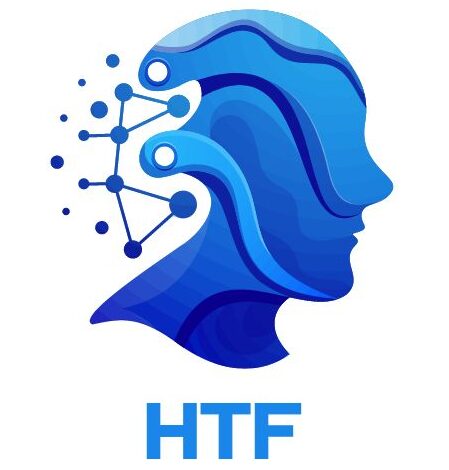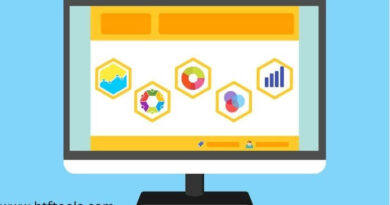Top 20 Free Social Network Analysis Tools for 2024

Introduction
We will see in this blog the Top 20 Free Social Network Analysis Tools for 2024. Thus they describe the features and workflow of a network by visual or statistical representation. So below we have listed some of the most effective social network analysis software programs and they are available for free.
1. AllegroGraph
These allograph tools are a graph database. So RDF (Resource Description Framework) has been developed to store triplets. Thus it is a completely practical OLTP database. Which stores data structured in graphs instead of tables.
So unlike traditional relational databases and plain property graph databases, it documents allographs and applies a combination of graph technology.
2. Commetrix
Commetrix App is a dynamic network visualization and analysis software. Which provides easy access to network data yet extensive access. So allows you to read all sources of accessible network data. As well as that authorship or business process network.
Thus helping you to cope with a large heterosexual network. As well as it can effectively evaluate the evolving patterns of electronic communication. Thus it includes voice over IP, instant messaging, and email.
3. Social Network Visualizer
As seen in this application, is a user-friendly, cross-platform tool useful for you to draw social networks on a virtual canvas. It also allows you to browse the Internet to load and create field data from a file network of connected web pages.
In addition, the Social Network Visualizer calculates standard graphs and network cohesion metrics such as density, heterogeneity, clustering coefficients, etc., matrix routines, and centrality and reputation indicators.
Through community search, structural equivalence analysis, multi-relational network loading, and editing, support fast algorithms for various random network generation models.
4. JUNG
The Java Universal Network / Graph Framework JUNG provides an extended language for modeling, analyzing, and visualizing data. Can therefore be described using a network or a graph.
This tool, if written in Java, makes full use of the full capabilities of the Java API and third-party Java libraries. So designed to support a wide range of units and their relationships. Such as hypergraphs, multi-modal graphs, directed and undirected graphs, and graphs with parallel edges.
If you look at this JUNG tool, it calculates random graph generation, clustering, optimization, and network distance. As well as it supports the implementation of numerous algorithms, including statistical analysis.
5. Tulip
This tulip tool is a lightweight framework for analyzing and visualizing relational data through which it supports the design of interactive information visualization applications for relational data. So it provides a fully functional library.
As well as being written in C ++, Tulip Elements makes it easy to reuse and analyze large datasets. Through which it is designed to visualize graphs up to 1,000,000 elements.
In addition, the framework supports a wide range of algorithms for graph visualization. As well as graph drawing algorithms, matrix algorithms, clustering algorithms, and visual attribute mapping algorithms.
6. Statnet
This statnet app is a set of R packages. Whereby this analytical structure relies on exponential family random graph models. As well as providing many tools for model estimation, model evaluation, model-based network simulation, and network visualization.
In addition, the extensive functionality of the statnet is powered by the central Markov chain Monte Carlo algorithm. Which can easily handle a network with several thousand nodes. As well as any specific network-related conditions may be different.
7. Netlytic
This Netlytic tool is a cloud-based social network analyst. Which is capable of automatically summarizing textual data and finding communication networks from publicly accessible social media posts. As well as using the API to collect posts from YouTube, Twitter, and RSS feeds. You can then upload existing datasets from Google Sheets and text / CSV files.
Then overall, the platform lets you know who is talking to whom in the community and how they are talking. So how often are they communicating? Who is discussing the topic and how do they feel about it? As well as can also help you discover and visualize the behavior and power of their interactions with each other.
8. NetworkX
This NetworkX tool is a Python library for creating and analyzing the design and dynamics of complex networks. So social network is a very measurable, portable, and reasonably efficient structure for analysis.
Through which NetworkX provides a standard programming interface and graph implementation. Which is suitable for various applications. So mostly used by computer scientists, physicists, mathematicians, and social scientists.
This tool makes it easy for you to draw 2D and 3D networks and find subgraphs, clicks, and k-cores. So you can also explore the degree, center, radius, diameter, engagement, etc.
9. Cytoscape
So you can connect it directly to external public databases. Can import network and annotation data as well. The cytoscape was then originally developed for biological research. Which has become a common platform for complex network analysis and visualization. In addition, the tool lets you customize the network data the way you want. As well as user-configured colors and expression data can be mapped to node color, border color border thickness, etc. depending on the visualization scheme.
10. Subdue
This subdued tool is a graph-bed knowledge discovery system. Which represents data using labeled, directed graphs. So like all other graphs, this graph has vertices and edges. Which represents the entity and the relationship, respectively.
Subdue clustering and graphs can perform various teaching functions ranging from learning grammar to supervised and non-supervised teaching.
It has since been successfully applied in several fields, including social network analysis and anomaly detection as well as CAD circuit analysis, protein structure analysis, and DNA gene transcription sites.
11. Graphviz
The Graphviz App is an open-source platform. So the data can be rendered in the form of easy-to-understand diagrams. As well as diagrams can have practical use in many different fields, especially in engineering.
Whereby Graphviz displays a graph description language called DOT language. As well as the platform provides some tools for creating and processing DOT files. Dot is also a graphical user interface for visualizing and editing graphs, for example.
12. NetMiner
In this NetMiner tool, you can find complex network data visually and interactively. So it allows you to analyze up to 5000 nodes and discover the hidden patterns and structures of the network.
These NetMiner tools have a few extensions. As well as expand its functionality and help you expand your research. Biblio Data Collector therefore makes it easy to deal with tedious tasks that are complex and time-consuming.
The data structure in the NetMiner tool consists of a dataset with multiple data items. Each of these items is then used as a basic unit for analysis. So within data objects, there is the main node set, subnode set, one-mode network, and two-mode network. In addition, all analysis and visualization are carried out by this dataset. Through which the basic data file, is managed as a project. Which is saved with the filename extension NMF.
13. SocioViz
If you look into the SocioViz tool, is a social media analysis platform designed for digital journalists, social researchers, and media marketers. So help them effectively analyze any word, topic, hashtag, or fan page. As well as it automatically collects worldwide trends.
In addition, the platform identifies key influencers and their opinions. Which is what people say about your brand and competitors. You can use this feature to listen to it as well.
Also, find any keywords and hashtags and filter the results by data and language. Through which to collect posts in real time. Then search the past week and identify the most relevant artists and content in the online conversation.
14. NetworKit
This network tool is an open-source toolkit for analyzing networks of any size between one thousand and several billion edges. So apply some efficient graph algorithms in parallel to use multicore architecture. In addition, algorithms calculate the main network metrics. Such as clustering coefficients, degree sequences, and centrality criteria.
Also, some implementations work well. Then, for example, it takes just three minutes to search for a community in a 3.3 billion edge web graph on a 16-core server.
Thus NetworKit provides functions for converting graph objects to NetworkX. Which thus connects the two different modules. Then the most effective way to get a complete picture of the network is to use the profiling module. If you are only interested in small subsets, it may make more sense to calculate them separately.
15. GraphStream
This graph stream tool is a Java library. So focus on the dynamic aspects of the graph. Thus it provides an easy way to present and process complex graphs. You can also store a variety of data attributes on graph elements.
Then presents the events and when the nodes, edges, or any associated elements change. It then does not just describe the fixed representation. It finally describes the whole evolving history of graph elements.
Thus the library also has the facilities to display the graph beautifully. The viewer then displays the nodes in an automatic layout. Which allows you to customize the rendering of components using a CSS stylesheet.
16. R
This R programming language is packed with numerous related packages for social network analysis. So all the existing packages that can be used for social network analysis have their features. Thus it can be used to calculate centralization, clustering coefficient, network diameter, density, page level, and many more specific features.
Through which network data is less regulated than social science data. The R programming language therefore makes it fairly easy to manipulate and reorganize data and implement customized tasks. In addition, the platform is free and platform-independent and can be used anywhere.
17. Pajek
This Pajek tool is an excellent program for analyzing and visualizing large networks. As well as in the Pajek tool you can find clusters in the network. So you can delete the vertices connected with the same clusters. Thus you can show them separately. You can then compress the vertices into clusters and show the relationship between the clusters.
In addition, some basic operations may include finding connected components, finding shorter routes, k-neighbors, network centralization, faster spars network multiplication, and generating a variety of random networks.
In addition, General Directed, Undirected, Mixed Networks, Page 2 Two-Mode Networks, and Bilateral Graph and Temporal Networks support Dynamic Graphs. Thus far, the Pajek tool has been used in many research areas such as social network analysis, biomedical/genomic research, genealogy, and data mining.
18. Gephi
This Gephi tool is similar to Photoshop for graph data – users interacting with representations. So manipulate formats, shapes, and colors to find hidden patterns. Thus the open-source tool uses the 3D Render engine to display graphs in real-time and speed up research.
It also creates hypotheses specifically for data analysts and scientists. It is then designed to detect patterns and isolate structural isolation and errors during data sourcing. In addition to traditional network analysis, Gephi has been used in various research projects in the fields of journalism and education. So for example, it has been used to present patterns of biological data, to investigate Twitter network traffic during social unrest, and to visualize the global connection of New York Times content.
19. Graph-Tool
As you can see this tool, is a Python module for the statistical analysis of complex networks. Its level of performance is therefore comparable to pure C and C ++ libraries in terms of computation time and memory usage. In addition, the modules use a variety of algorithms and output formats to display graphs. Which has its layout algorithm and interactive drawing routine based on open-source graphic libraries called Cario and Graphviz.
20. EgoNet
This egocentric network study software tool allows you to create a questionnaire and collect and analyze all the social network data of the website on the Internet. So also provides a set of data and comprehensive measures. Thus it can be used for further analysis by other tools. Also written in Java, EgoNet has two modules. The first is to create the EgoNetW questionnaire format and the second is to define EgoNetClientW-related questions.
Thanks for reading Top 20 Free Social Network Analysis Tools for 2024, I hope you enjoyed reading this and found it useful.




